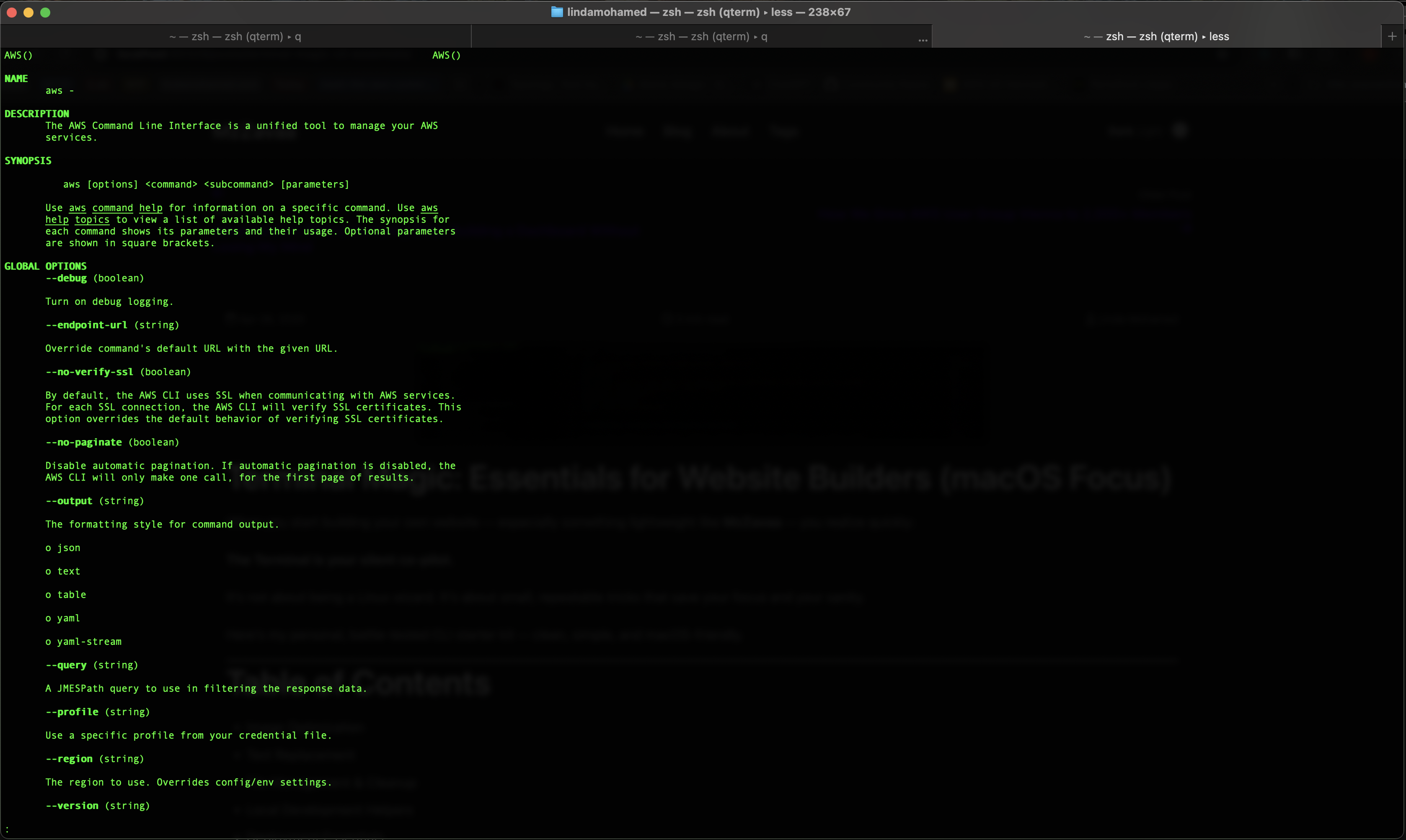
Terminal Magic: Essentials for Website Builders (macOS Focus)
When you start building your own website — especially something lightweight like MzZavaa — you realize quickly:
The Terminal is your silent co-pilot.
It’s not about being a Linux wizard. It’s about small, repeatable tricks that save your focus and your sanity.
Here’s my personal, battle-tested CLI starter kit — clean, simple, and macOS-friendly.
Table of Contents
- Image Optimization
- Text Replacement
- File Management & Cleanup
- Local Development Helpers
- Deployment Essentials
- Searching Through Code
- Backup & Archiving
- Bonus Shortcuts
🗾 Image Optimization: Shrink Images Fast
Large images kill website speed. Resize them before upload.
Bulk resize PNGs:
mogrify -resize 800x *.png
📌 This resizes every .png in the current directory to a max width of 800px, maintaining aspect ratio.
Convert images to optimized JPEGs:
mogrify -format jpg -quality 85 *.png
📌 Good if you want to shrink file size even further for static blogs.
Note: Install ImageMagick if you don’t have mogrify yet:
brew install imagemagick
Text Replacement Across Many Files
When you need to update something across 100+ files, sed is a lifesaver.
Find and replace text in .html files:
sed -i '' 's/old-link/new-link/g' *.html
On macOS, the empty '' after -i is required for in-place editing.
File Management & Cleanup
Project folders get messy fast.
Find and delete all .tmp or unwanted backup files:
find . -name "*.tmp" -type f -delete
Find big files (>10MB):
find . -type f -size +10M
Local Development Helpers
Sometimes you want to test your static site locally without setting up Nginx or Apache.
Start a simple local web server:
python3 -m http.server 8000
Then open http://localhost:8000 in your browser.
📌 Great for quickly previewing your Hugo public/ folder.
Deployment Essentials
Upload your static site easily with rsync — faster and safer than FTP.
Sync your build folder to a remote server:
rsync -avz --delete public/ user@yourserver:/var/www/html/
-ameans archive mode (keep permissions, etc.)-vmeans verbose (see what’s happening)-zmeans compress data during transfer--deleteremoves files on the server that no longer exist locally (be careful!)
Searching Through Code and Projects
Find broken links, missed TODOs, old API calls — quickly.
Search recursively for a string in all files:
grep -rnw 'searchTerm' .
-rmeans recursive-nshows line numbers-wmatches whole words only
Backup & Archiving
Back up your project folders before big updates!
Create a compressed archive:
tar -czvf mybackup.tar.gz myproject-folder/
📌 Good habit before deploying changes you might regret.
Bonus Shortcuts
Some quick helpers you’ll thank yourself for learning:
Show folder sizes in human-readable format:
du -sh *
Show only top-level disk usage (for large projects):
du -h --max-depth=1
List the 20 most recently modified files:
ls -lt | head -n 20
Final Thoughts
You don’t need to memorize 500 CLI commands to be productive.
You just need a handful you actually use.
This list evolved while building:
- MzZavaa (this blog)
- Meet the AWS Community site
- The Juggling Company project
And all the little experiments in between.
Use the terminal like a paintbrush — not a punishment.
If you want a “Terminal Essentials Vol. 2” covering more git tricks, AWS CLI shortcuts, or advanced workflows, let me know! 🚀